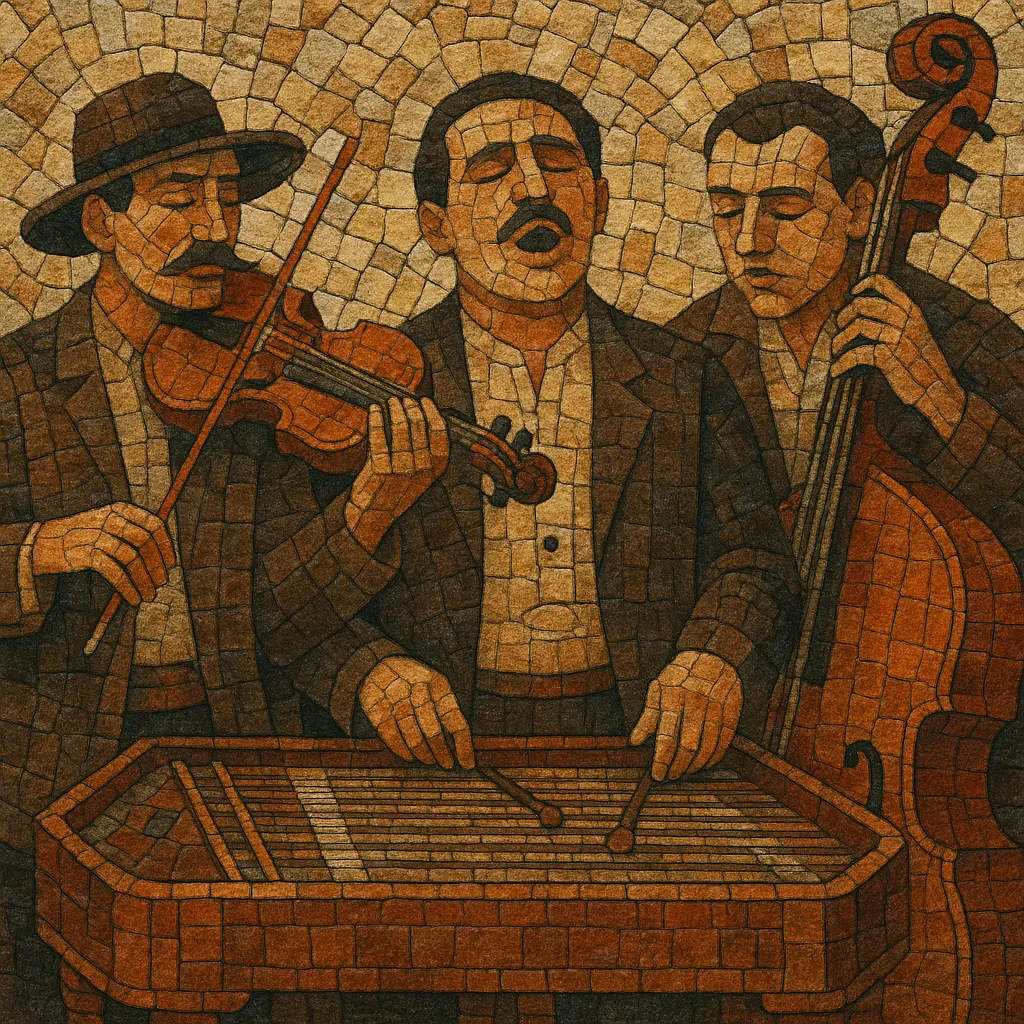Nóta (often called magyar nóta) is an urban Hungarian popular art-song tradition that crystallized in the late 19th century. It blends authored, strophic songs with the performance practice of Romani (Gypsy) string bands, yielding a style that is both salon-refined and folk-rooted.
Typically sung in Hungarian with sentimental or patriotic texts, nóta features highly ornamented melodies, rubato delivery (parlando–rubato), and characteristic scales associated with Central European Romani practice. Performances are led by a primás (lead violinist), supported by cimbalom, brácsa (viola), and double bass, creating a lush, responsive accompaniment around the voice.
While distinct from traditional peasant folksong (népdal), nóta became a potent symbol of urban Hungarian identity, flourishing in cafés and restaurants and shaping how the world heard “Hungarian” music.
Magyar nóta emerged as Hungary urbanized in the 1800s. Drawing on peasant song (népdal), the romanticized recruiting-dance idioms of the earlier verbunkos tradition, and the harmonic language of 19th‑century Romantic music, composers crafted authored strophic songs tailor-made for performance by Romani string bands. By the 1860s–1890s, the genre’s features—ornamented melodies, parlando–rubato delivery, and vivid violin leadership—were firmly established.
Nóta reached its peak in the late 19th and early 20th centuries in Budapest’s cafés and restaurants, where primás-led ensembles accompanied star singers and satisfied an appetite for sentimental, patriotic, and convivial themes (love, homeland, wine, parting). The public came to associate this sound—with cimbalom shimmer, soaring violin, and flexible vocal phrasing—as quintessentially “Hungarian.”
The interwar and post‑WWII eras saw changing tastes, yet nóta remained audible in social life and on radio. Under state socialism, it was alternately constrained or supported as a “folk-related” national style, though the rise of modern pop and light music reduced its mainstream space. The performance practice, however, endured within Romani orchestras and on recording.
From the late 20th century onward, nóta’s DNA flowed into party-oriented mulatós music and continued to inform stage and touring Romani orchestras. Festivals, television features, and heritage ensembles keep the repertoire alive. Today, nóta stands as a bridge between folk tradition and urban salon style, a hallmark of Hungarian musical identity.


